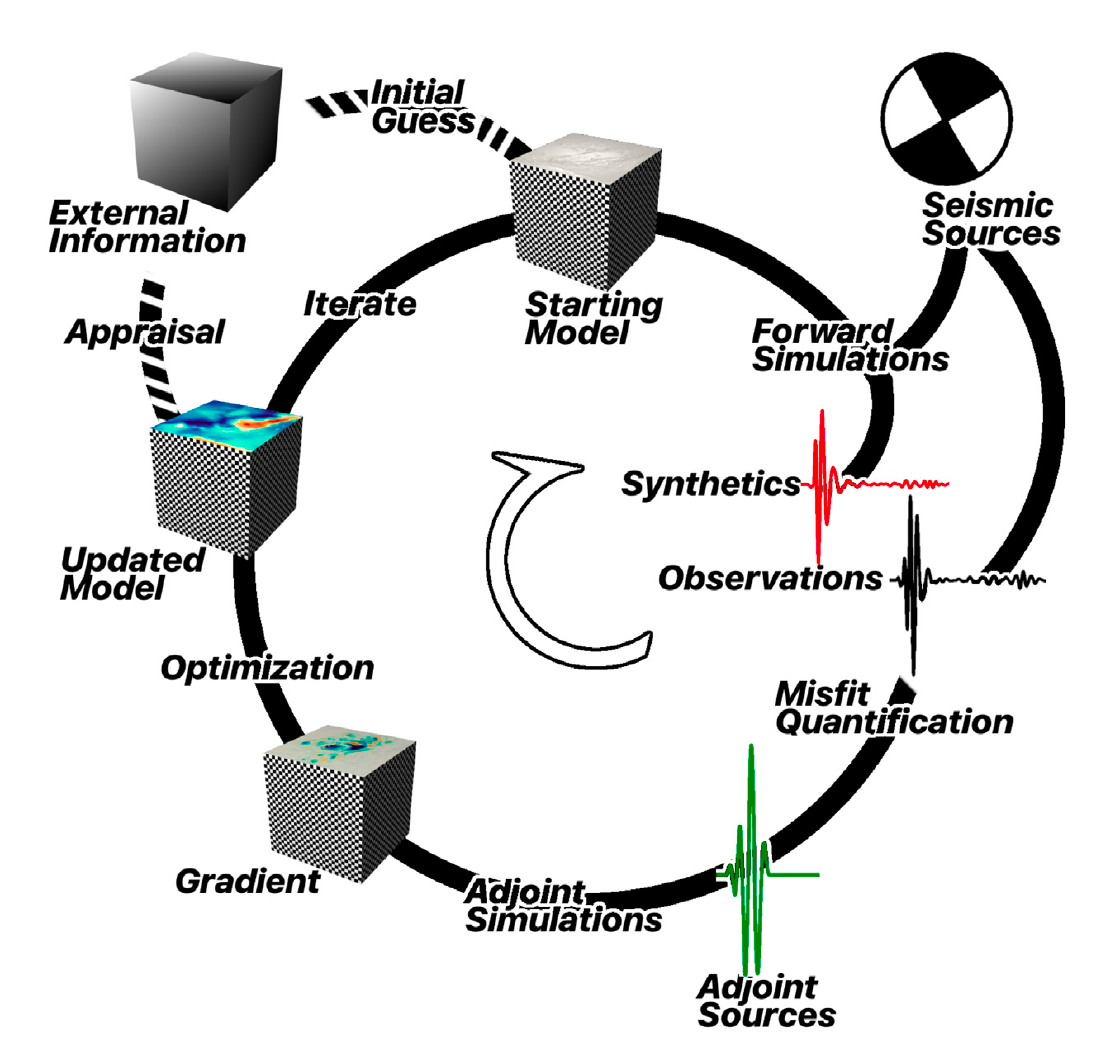 |
| November 2020 Volume 9 Issue 4 |

Seismology offers the most powerful tool for characterizing the subsurface structure of Earth. Earthquakes occurring near the surface and as deep as 700 km emit elastic waves that are recorded by seismometers on Earth's surface. The shapes and arrival times of the recorded waves can be compared with seismograms modeled in a relatively simple, starting description of Earth's inner structure. By quantifying seismogram differences, seismologists can formally improve the description of Earth's structure by performing an inverse problem known as tomography. Tomography, best known in the medical fields, is about characterizing variations in a 3D medium (human body, oil reservoir, Earth's mantle) without directly measuring the properties.
Over the past 20 years, advances in computational methods and high-performance computing have enabled a new, more accurate form of seismic tomography. Previously the tomographic problem began with a simple description of Earth, whereby analytical methods could be used to represent wave propagation and measurement sensitivities. Now, it is possible to begin with a more accurate and complex 3D description of Earth, while also using 3D numerical simulations to account for realistic complexities of wave propagation.
On paper, seismic tomography is a straightforward optimization problem: ... continued.
The CIG Community Workshop completed a series of community engagement activities in planning for the CIG of the future. Over 110 community members joined for plenary and breakout discussions over the three day workshop. Education and diversity were consistent community themes along with strong interest to create connections with other NSF communities. Foundational to CIG is continuing to promote best practices and developing general tools including those for visualization and workflows. I was especially excited to hear enthusiasm from many of our early career researchers for the continued support of CIG and look forward to your contributions in the coming years. The workshop summary is available and can be accessed from the workshop page.
As Governance continues its discussions this month, we will be reviewing the feedback in planning for CIG IV and preparing our community for leading edge science.
AGU is virtual this year. And zoom burnout is real. As we have just completed a community-wide meeting, we have not scheduled an additional event. AGU is a time to catch-up with the community and I will miss the opportunity to interact with you in person, but hope to be able to attend many of your talks virtually.
Best wishes to you and your family in the new year.
Lorraine Hwang, Director
Looking for talks in geodynamics at AGU? Visit our website to see the latest research your CIG colleagues are presenting. Do not forget to email us your presentation information to increase the visibility of your research and showcase our community.
Are you passionate about software and interested in contributing to the CIG Community? Applications are invited for Postdoctoral Researchers who are interested in contributing to the development and support of numerical modeling codes in geodynamics and towards conducting independent research. We seek proposals for innovative, original, and feasible software engineering and/or software development projects that complement and/or improve our current practices. Applications in visualization, scientific workflows, and education are highly encouraged. This is a continuing recruitment. Last day to apply is June 30, 2021
2020 Elections are now open for positions on the Executive and Science Steering Committees. Candidates for 1 seat on the Executive Committee are Mark Behn, Alice Gabriel, Eric Hetland, and Michael Thorne. Candidates for the 3 seats on the Science Steering Committee are: Seat 1. Sylvain Barbot and Elizabeth Hearn; Seat 2. Nicole Gasparini and John Naliboff; Seat 3. Min Chen, Lorenco Colli, and David Ham. View the Candidates Statements. Contact your Member Representative to vote. Many thanks to EC member Carl Tape and SSC members David Ham, Jessica Irving, and Gabriele Morra for their contributions to the community. Voting closes November 23, 2020.
Have an idea and looking for a community to engage with? CIG seeks to encourage new ideas from the community by forming Focused Working Groups (FWG). FWG's should address a specific topic and have a clearly defined scope e.g. workshop, white paper, benchmark, etc. A FWG should define concrete outcome(s) achievable within a short time frame, email]
Welcome to our newest International Affiliate, Aachen University and Member Representative Suzanne Buiter. In addition, we welcome Lorenzo Colli as the new Member Representative from the University of Houston.
Remember to join our forum to receive announcements for these and other 2021 events as dates are finalized.
| Fall 2020 | |
| November 12 |
Jonathan Perry-Houts, CIG UC Davis. |